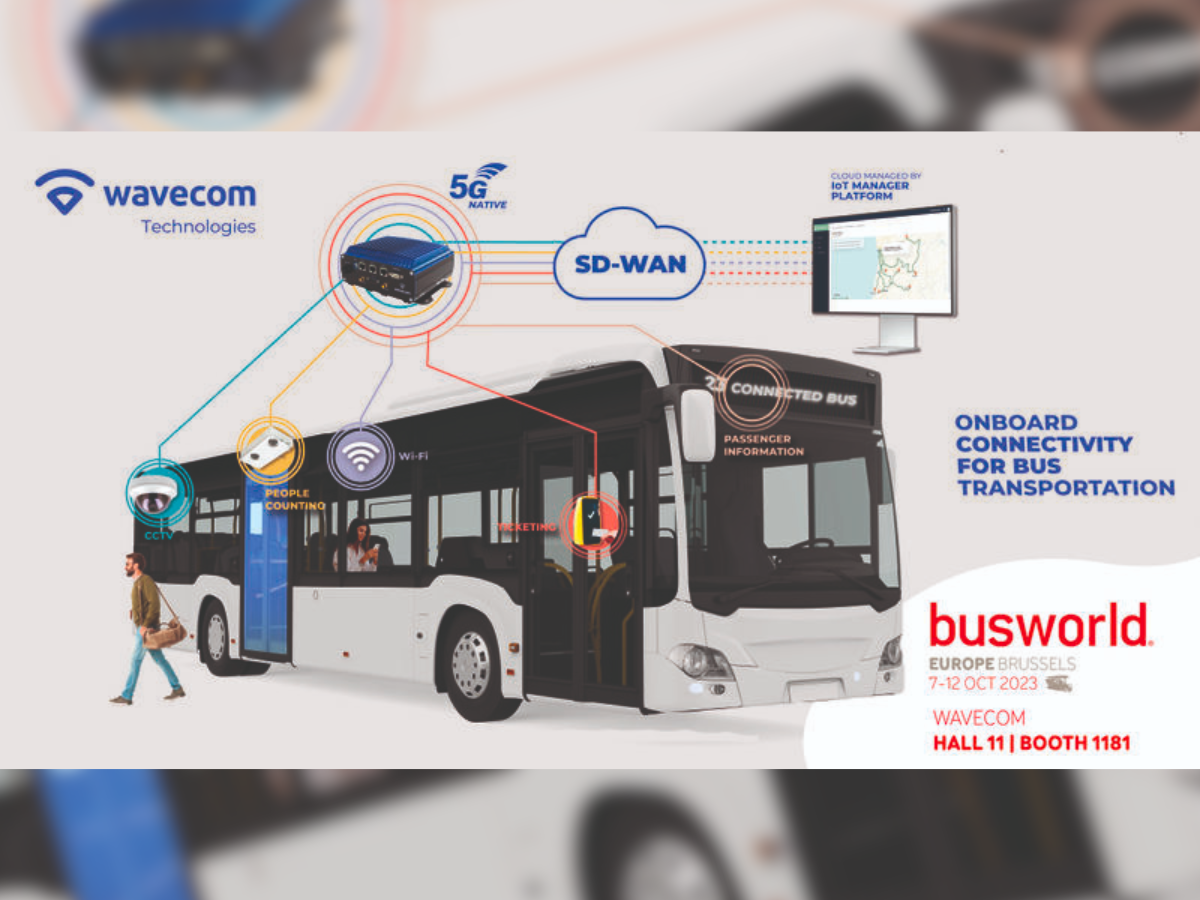As technology evolves, older technologies are becoming obsolete and are being gradually replaced. This trend is evident in the telecommunications sector, where MNOs (Mobile Network Operators) worldwide are migrating from 3G to more advanced technologies, including 4G-LTE and 5G.
Most on-board bus connectivity solutions built for 3G are only compatible with this technology, meaning equipment will no longer be supported. The reality of the 3G shutdown can mean that on-board bus connectivity solutions will become unusable.

This article addresses how the 3G shutdown can affect on-board bus connectivity solutions and to overcome it. It also explains how Wavecom Technologies Connected Bus solution is already prepared for 3G shutdown, both for new installations of on-board bus connectivity and for migrations to 5G in existing installations based on 3G.
The 3G shutdown requires immediate action, particularly in industries that rely on mobile connectivity to function, such as bus transportation fleets. Most on-board bus connectivity platforms built for 3G are only compatible with this technology, meaning equipment will no longer be supported. Without upgrading to 4G-LTE or 5G on-board bus connectivity will soon be unusable. This is because, without connectivity, on-board devices will not be able to communicate since gateway only supports communications based on 3G technology.
The Wavecom Technologies Connected Bus solution is not affected by 3G shutdown since it uses amodular Gateway, that is modular and evolutive in terms of communications technology and it is 5G native. Modular Gateway accommodates 2 4G-LTE/5G modems, which besides providing redundancy since it uses SIMs from two different MNOs, it is already prepared for 3G shutdown.
3G Shutdown
3G was the first cellular technology to offer high-speed internet access, video calling and mobile TV, representing a significant technological advancement at the time of its introduction. However, the limited availability of broadband data connections, the high cost of maintaining 3G networks and the considerable energy consumption involved have prompted many MNOs to phase out 3G technologies.
The radio spectrum is a finite resource and legacy technologies such as 3G are occupying electromagnetic space that could be better utilised by new 4G-LTE/5G technologies to reach their full potential, allowing higher speeds and better coverage. At the same time, the EU has identified the 5G network as the optimal solution for achieving the digitalisation goals set for 2030, giving its superior agility and efficiency.
The timing of this 3G shutdown varies by MNO and country.
Implications for Bus Operators’ Fleets
The operation of bus transportation fleets and on-board bus connectivity systems is heavily reliant on cellular networks for the provision of on-board passenger Wi-Fi internet access, enabling real-time tracking and security, communication and data collection.
Most integrated on-board bus connectivity solutions built for 3G are only compatible with this technology, which means the equipment will no longer be supported. This is because, in the absence of connectivity, on-board devices will be unable to communicate, given that the existing modular gateways are only compatible with 3G technology.
Considering this, the potential disruption to the continuity of operations that could result from the shut-down of the 3G network, if not adequately addressed through an upgrade to 4G-LTE/5G, represents a significant risk for operation of bus fleet management systems, disrupting business continuity. The reality of the 3G shutdown has the potential to render on-board bus connectivity solutions inoperable, if not addressed.
The audit of bus operators’ fleets is a crucial first step to identifying the extent of the impact that the 3G shutdown will have on their operations. It involves a comprehensive assessment of all the technological devices that their bus fleets are currently using.
Connected Bus Solution
The Connected Bus solution has been developed with the specific needs of bus operators in mind, with the aim of significantly improving their business efficiency and profitability in a modular and evolving way, wherever a bus travels along a route in an urban, sub-urban or rural environment.
Mainly, it comprises a modular Gateway (5G Native) installed on board of a bus vehicle, which is cloud managed by IoT Manager/Multi-Tenant Platform (5G WAN Manager | SD-WAN), through a GUI-based dashboard showing real-time status and performance metrics, as depicted in Figure 2.

Modular Gateway
In addition to being 5G native and currently offering Wi-Fi 6/6E, theModular Gateway is characterised by a high degree of modularity and evolvability. It supports two 5G modems, providing redundancy by using SIMs from two different MNOs. The antenna connected to the Modular Gateway and mounted on the roof of the bus picks up the signal switching between 5G cells at the nearest BTS (Base Transceiver Stations) along the bus route or at bus stops. Inside the bus, passengers connect to the Wi-Fi network via Modular Gateway, which provides two separated Wi-Fi 6/6E (IEEE 802.11 axTM) Access Points, that are already ready to evolve to Wi-Fi 7 in the near future. The environment on-board a bus can be considered as a high-density one, given the large number of passengers who need to stay connected simultaneously at any given time. Wi-Fi 6/6E provides a more reliable performance in high-density environments, thereby improving connectivity continuity.
Conclusion
The 3G shutdown could compromise the continuity of operations if the upgrade to 4G-LTE/5G is not carried out in bus fleets.
In the worst case, modems are only interchangeable if this functionality is supported by modular gateways, as is the case with Wavecom Technologies’ s Modular Gateway. If it is not feasible to replace the modems, the 3G gateway will need to be replaced with a newer model that provides 4G-LTE/5G connectivity.
Wavecom Technologies Connected Bus solution is not affected by 3G shutdown since it uses a modular Gateway, that is modular and evolutive in terms of communications technology and it is 5G native. Modular Gateway accommodates two 5G modems, which besides providing redundancy since it uses SIMs from two different MNOs, it is already prepared for 3G shutdown.
Therefore, for bus operators who will have to upgrade the on-board bus connectivity in their bus fleets, as they still use 3G access, Connected Bus solution is an appropriate choice.
This article was originally published by Wavecom.












